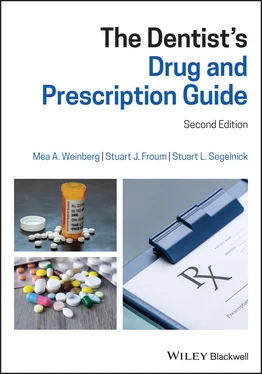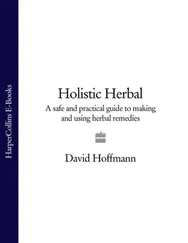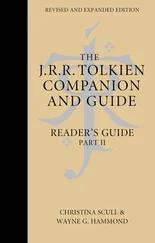7 Q. How can the dentist determine if dosage adjustment is necessary?
8 A. Unlike in renal disease, in which CrCl and GFR can be used as reliable indicators for adjustments in drug dosage, it is more difficult to determine indicators of liver function. The liver enzymes such as AST, ALT, gamma‐glutamyl transferase (GGT) and AP only indicate if there is liver cell damage but does not relate to the ability of the liver to metabolize drugs. Either the dosage must be decreased or the dosing interval increased. Consult with the patient's physician for any dosage adjustments.
9 Q. Why do certain drugs require dosage adjustments in patients with liver insufficiency?
10 A. See Table 3.19. All drugs have to be eliminated from the body. Either the drug is metabolized into a water‐soluble metabolite in the liver or it is eliminated unchanged (not metabolized). Most drugs are metabolized and excreted primarily by the kidneys in the urine. Other drugs that are not metabolized go through the liver unchanged and are excreted in the bile (fluid secreted by the liver and stored in the gallbladder). From there, the bile with the drug enters the gastrointestinal tract and then is either eliminated in feces or reabsorbed back to the liver by enterohepatic recirculation (or enterohepatic cycling) and eventually metabolized by the liver and excreted via the kidneys in the urine. Some drugs can also change into metabolites in the liver and are then excreted in the bile; these are eliminated in the feces and reabsorbed back into the blood. For example, tetracycline is not metabolized (unchanged) and undergoes enterohepatic recirculation being excreted in both the urine and bile and recovered in the feces. Doxycycline is also not metabolized in the liver but is partially deactivated in the intestines and primarily recovered in the feces.If the liver is not functioning normally, the dosage of a drug that is eliminated primarily in the liver may need to be adjusted. But as mentioned earlier, there is no way to determine liver function.
11 Q. What drugs used in dentistry must have their dosages altered in patients with renal and liver impairment?
12 A. See Table 3.19. Table 3.19 Drug dosages in renal and liver impairmentSource: Adapted from Brockmann and Badr (2010), Gelot and Nakhla (2014), Munar and Singh (2007).DrugGFR >50 mL/min/1.73 m2GFR 10–50 mL/min/1.73 m2GFR <10 mL/min/1.73 m2Liver impairmentAcetaminophen (Tylenol®)No change (interval is q4–6h)Every 6 hoursEvery 8 hoursLimited, low‐dose therapy is tolerated in hepatic cirrhosis. Maximum dose should be <2 g/dayAmoxicillinNo change (250–500 mg q8h interval)Every 12 hoursEvery 24 hoursSafe to use with usual dosageAmoxicillin/clavulanate (Augmentin®)No change (500 mg q12h or 250 mg q8h)Every 12 hoursEvery 24 hoursIf history of amoxicillin/clavulanate‐associated hepatic damage, then it is contraindicatedAspirinNo changeNo adjustmentAvoidAvoid due to increased risk of bleedingAzithromycin (Zithromax)No change (500 mg once, then 250 mg qd × 4 days)No adjustmentNo adjustmentAvoidClarithromycin (Biaxin)No change (250–500 mg q12h)500 mg once, then 250 mg every 24 hoursIncrease interval to every 24 hours or reduce dose by 50%No adjustmentClindamycin (Cleocin®)No change (150–450 mg tid)No adjustmentNo adjustmentNo adjustment with hepatitis; decrease dose by 50% in cirrhosisCodeine (with acetaminophen)No change (60 mg (no. 3) q4–6h)Administer 50% of dose with same interval (15–30 mg)Administer 75% of dose with same interval (7.5–15 mg)Not recommended in severe liver disease because codeine will not be converted to morphine, resulting in inadequate analgesiaDiflunisal (Dolobid®)No change (500–1000 mg followed by 250–500 mg q8–12h; maximum daily dose 1.5 g)Best to avoid or decrease dose 50%Best to avoid or decrease dose 50%AvoidDoxycyclineNo change (100 mg q12h on day 1, then 100 mg qd)No adjustmentNo adjustmentAdministered cautiously in patients with preexisting liver disease or biliary obstruction. Reduced dosages may be appropriate, since doxycycline undergoes enterohepatic recycling. Best to give alternative antibioticErythromycinNo change (base: 250–500 mg q6h) (erythromycin ethylsuccinate 400 mg)No adjustmentNo adjustmentAvoid with the estolate – may cause hepatotoxicityHydrocodone and acetaminophen (Vicodin, Lorcet®, Lortab®)One to two tabs q4–6hStart conservatively and titrate dosage carefully to desired effectStart conservatively and titrate dosage carefully to desired effectConsider decreasing dose and use for 2–3 days, or avoidIbuprofen (Advil, Motrin®, Nuprin®)No change (OTC: 200 mg q4–6h; max 1200 mg/24h)Best to avoid, or reduce dose in significantly impaired renal function; caution advisedBest to avoid, or reduce dose in significantly impaired renal function; caution advisedAvoid in severe hepatic disease (hepatitis and cirrhosis)Metronidazole (Flagyl®)No change (500 mg q6–8h interval)No adjustmentEvery 12–24 hoursReduce dose in severe liver disease because drug can accumulate. No dose adjustment needed with mild liver diseaseNaproxen (Naprosyn) Naproxen sodium (Aleve)Naprosyn: 250–500 mg bid Aleve: 220 mg q8hNot recommendedNot recommendedNot recommendedPenicillin VNo change (250–500 mg q6h)No adjustmentNo adjustmentSafe to use usual dosageTetracyclineNo change (250–500 mg q6h)Best to avoid and use doxycycline insteadBest to avoid and use doxycycline insteadAvoid
13 Q. Can penicillin be prescribed to patients with liver disease?
14 A. Yes.
15 Q. Are local anesthetics metabolized in the liver?
16 A. Yes. Lidocaine, mepivacaine, bupivacaine, and prilocaine are metabolized in the liver. These agents are still well tolerated by patients with mild to moderate liver disease but in severe disease, changes may be necessary. According to Little et al. (2008), three cartridges of 2% lidocaine is considered to be adequate for these patients. Consultation with the patient's physician is recommended (Pamplona et al. 2011).
17 Q. Which antibiotics are safe to give to patients with liver disease?
18 A. See Table 3.19. Penicillin V, amoxicillin, clarithromycin (Biaxin), clindamycin (OK in hepatitis but decrease dose by half in cirrhosis).
19 Q. Which analgesic is safe to give to patients with liver disease?
20 A. Acetaminophen is considered to be safe and effective overall and is the recommended analgesic for individuals with liver disease. However, avoid chronic use and only use low‐dose therapy for the shortest duration possible. The maximum daily dose is <2 g (Hayward et al. 2015; Hughes et al. 2011). As mentioned earlier, the FDA has recommended that all manufacturers of combination narcotic/acetaminophen use only 325 mg of acetaminophen per dosage formulation. It can be toxic to the liver when taken in excessive doses or with alcohol. It is an absolute contraindication in alcoholic cirrhosis. It has been reported that acetaminophen is safe in patients with stable chronic alcoholic liver disease for at least a short period of time (maximum 48–72 hours) up to the maximum recommended dose (Worrlax and Flake 2007). Therefore, it is important to not exceed recommended dosages. It may be prudent to consult with the patient's physician before prescribing any analgesics. If a narcotic is needed, any combination narcotic with acetaminophen is safe as long as the maximum recommended dose is not exceeded. Also, hydrocodone + ibuprofen (Vicoprofen®) can be prescribed if the dentist or patient does not want to use acetaminophen.Since the liver is the primary site for opioid metabolism, in patients with liver disease there is a risk of opioid accumulation. Codeine should be avoided because it is a prodrug which normally undergoes transformation in the liver to morphine, its active metabolite. In cases of liver damage, codeine cannot be transformed, resulting in inadequate pain relief. For moderate to severe pain, hydrocodone is recommended but with low dosage and only 2–3 days of use. Decrease dose by 50% of usual dose; prescribe one tab q6h or q8h (Gelot and Nakhla 2014).NSAIDs should be avoided in patients with cirrhosis because of the risk of acute renal failure as a result of prostaglandin inhibition (Imani et al. 2014). Opioids should be avoided or used at the lowest dose for the least amount of time (Imani et al. 2014)
Читать дальше












